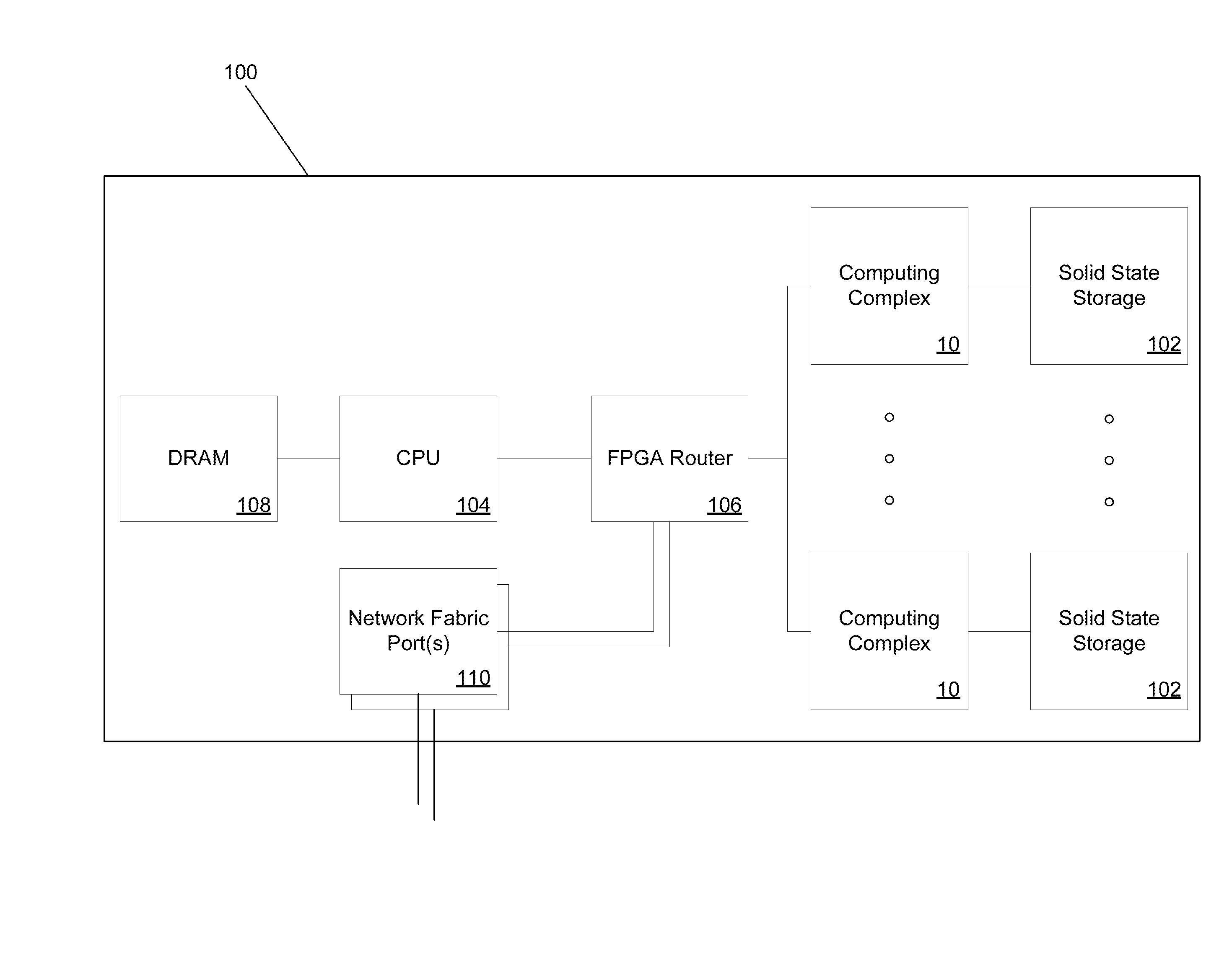Systems and methods for rapid processing and storage of data
a data processing and data technology, applied in the field of parallel processing systems, can solve the problems of power consumption, significant bottleneck between disk storage and blades, and roadrunners are affected, and achieve the effect of improving latency and speeding up bandwidth to storag
- Summary
- Abstract
- Description
- Claims
- Application Information
AI Technical Summary
Benefits of technology
Problems solved by technology
Method used
Image
Examples
Embodiment Construction
[0032]Turning now to the drawings, systems and methods of building massively parallel computing systems using low power computing complexes in accordance with embodiments of the invention are illustrated. In many embodiments, the low power computing complexes include a System on Chip (SoC) that combines low power general processing core(s) with an accelerator, and an I / O interface, with Package on Package (PoP) DRAM. In several embodiments, the SoC also includes a RAID memory controller that can coordinate the reading and writing of data to one or more non-volatile memory chips such as (but not limited to) NAND Flash memory chips. The low power computing complexes are small and efficient, and can achieve at least 64 Gflops and access data at rates of at least 200 MB / s from the non-volatile memories.
[0033]In many embodiments, an array of low power computing complexes are used to construct computing blades, referred to as Solid State Blades. The array of low power computing complexes ...
PUM
 Login to View More
Login to View More Abstract
Description
Claims
Application Information
 Login to View More
Login to View More - R&D
- Intellectual Property
- Life Sciences
- Materials
- Tech Scout
- Unparalleled Data Quality
- Higher Quality Content
- 60% Fewer Hallucinations
Browse by: Latest US Patents, China's latest patents, Technical Efficacy Thesaurus, Application Domain, Technology Topic, Popular Technical Reports.
© 2025 PatSnap. All rights reserved.Legal|Privacy policy|Modern Slavery Act Transparency Statement|Sitemap|About US| Contact US: help@patsnap.com



